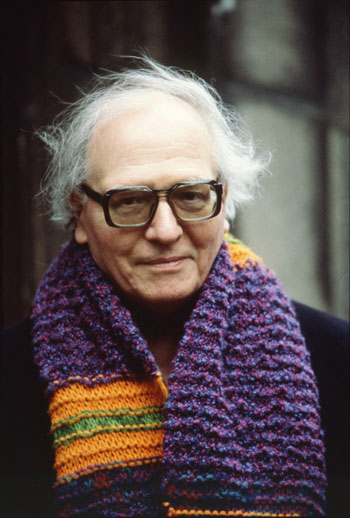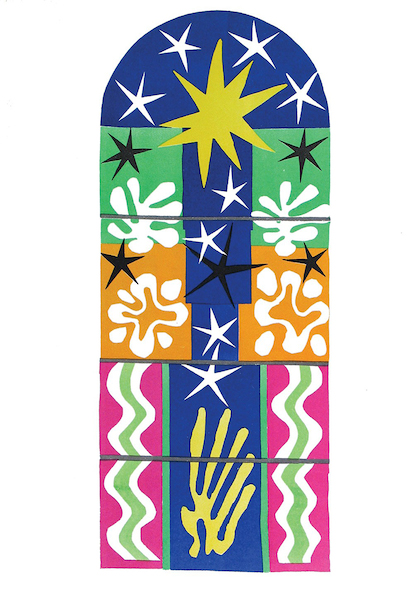

 |  |
From Turangalîla-Symphonie
V: Joie du sang des étoiles ‐ Joy of the
stars' blood (6'42)
with the Orchestre de l'Opéra Bastille conducted by
Myung-Whun Chung
Six petites esquisses d'oiseaux ‐ Six little
sketches of birds
played by Stephen De Pledge
I: Le rouge-gorge ‐ The European robin (2'18)
II: Le merle noir ‐ The blackbird (2'08)
III: Le rouge-gorge ‐ The European robin (2'30)
IV: La grive musicienne ‐ The song thrush (2'12)
V: Le rouge-gorge ‐ The European robin (2'34)
VI: L'alouette des champs ‐ The skylark (2'25)
Quatuor pour la fin du Temps ‐ Quartet for the End of Time
played by the Amici Ensemble
And I saw another mighty angel come down from heaven,
clothed with a cloud: and a rainbow was upon his head, and his
face was as it were the sun, and his feet as pillars of
fire... and he set his right foot upon the sea, and his left
foot on the earth,... And the angel which I saw stand upon
the sea and upon the earth lifted up his hand to heaven,...
And sware by him that liveth for ever and ever,...
that there should be time no longer: But in the days of
the voice of the seventh angel, when he shall begin to sound,
the mystery of God should be finished...
Revelation 10: 1-7
Conceived and written during my captivity, the Quartet for the End of Time was first performed in Stalag VIII A on January 15, 1941, by Jean Le Boulaire (violin), Henri Akoka (clarinet), Etienne Pasquier (violoncello), and myself on piano. It was directly inspired by this verse from Revelation. Its musical language is essentially immaterial, spiritual, catholic. Modal scales, melodically and harmonically realizing a sort of tonal ubiquity, lead the listener toward spatial or infinite eternity. Special rhythms, beyond any regular meter, are of great assistance in transcending the temporal. (But all this is merely striving and stammering, if one reflects on the overwhelming grandeur of the subject!)
The Quartet comprises 8 movements. Why? Seven is the perfect number, the 6-day creation sanctified by the divine sabbath; the 7 of this repose stretches into eternity and becomes the 8 of unalienable light, of unalterable peace.
I: Liturgie de cristal ‐ Liturgy of crystal (2'39)
Between 3 and 4 o'clock in the morning, the birds awake:
a blackbird or a solo nightingale improvises, surrounded by a
shimmer of sound, a halo of trills lost high in the trees.
Transfer this to the religious plane and you have the
harmonious silence of the sky.
II: Vocalise, pour l'Ange qui annonce la fin du Temps
‐ Melody without words, for the Angel who announces the
end of Time (5'02)
The 1st and 3rd parts (very short) evoke the power of
this mighty angel, crowned by rainbow and clothed in cloud,
with one foot on the sea and one on the earth. In between
are the intangible harmonies of heaven. On the piano, gentle
cascades of blue-orange chords, surrounding with their
distant chimes the almost plainchant melody of the
violin and violoncello.
III: Abîme des oiseaux ‐ Abyss of birds (8'23)
The abyss is Time, with its sadness, its heaviness.
Birds are the opposite of Time: our yearning for light, for
stars, for rainbows, and for jubilant songs!
IV: Intermède ‐ Interlude (1'42)
A scherzo, more extroverted in character than the other
movements, but nevertheless connected to them by certain
melodic "memories."
V: Louange a l'Eternité de Jésus ‐
Praise to the Eternity of Jesus (8'19)
Jesus is here regarded as the Word. A grand phrase,
infinitely slow, on the violoncello, lovingly and reverently
glorifies the eternity of this mighty and gentle Word, "which
the years cannot exhaust." The melody unfolds majestically
into a sort of tender, regal distance. "In the beginning was
the Word, and the Word was with God, and the Word was God."
VI: Danse de la fureur, pour les sept trompettes
‐ Dance of fury, for the seven trumpets (6'18)
Rhythmically the most distinctive movement of the
piece. The four unison instruments take on the character
of gongs and trumpets (the first six trumpets of the
Apocalypse followed by various catastrophes, the seventh
announcing the completion of the mystery of God). Use of
added values, of augmented or diminished rhythms, of
non-retrogradable rhythms. Music of stone, awesome sonority
of granite; inexorable motion of steel, huge blocks of purple
rage, of icy intoxication. Notice, above all, the terrible
fortissimo of the theme in augmentation and change of
register of its different notes, near the end of the movement.
VII: Fouillis d'arc-en-ciel, pour l'Ange qui annonce la fin
du Temps
‐ Tumult of rainbows, for the Angel who announces the end
of Time (7'19)
Here some of the passages in the second movement
return. The Angel appears with great might, surmounted by a
rainbow (the symbol of peace, of wisdom, and of all vibrations of
light and sound). ‐ In my dreams, I hear and see
ordered chords and melodies, known colors and shapes; then,
beyond this transitional stage, I pass into the unreal and
feel with ecstasy a gyration, a spinning interpenetration of
superhuman sounds and colors. These swords of fire, these
blue-orange lava flows, these sudden stars: here is the
tumult, here the rainbows!
VIII: Louange a l'Immortalité de Jésus
‐ Praise to the Immortality of Jesus (6'27)
Long violin solo, a counterpart to the violoncello solo of the
5th movement. Why this second song of praise? It is
specifically addressed to the second aspect of Jesus, to Jesus
the Man, the Word made flesh, immortally resurrected to give us
his life. It is absolute love. Its slow rising to extreme
heights is the ascent of man towards God, of the Son of God
towards his Father, of the deified being towards Paradise.
And I repeat again what I said before: "all this is merely striving and stammering, if one reflects on the overwhelming grandeur of the subject!"
